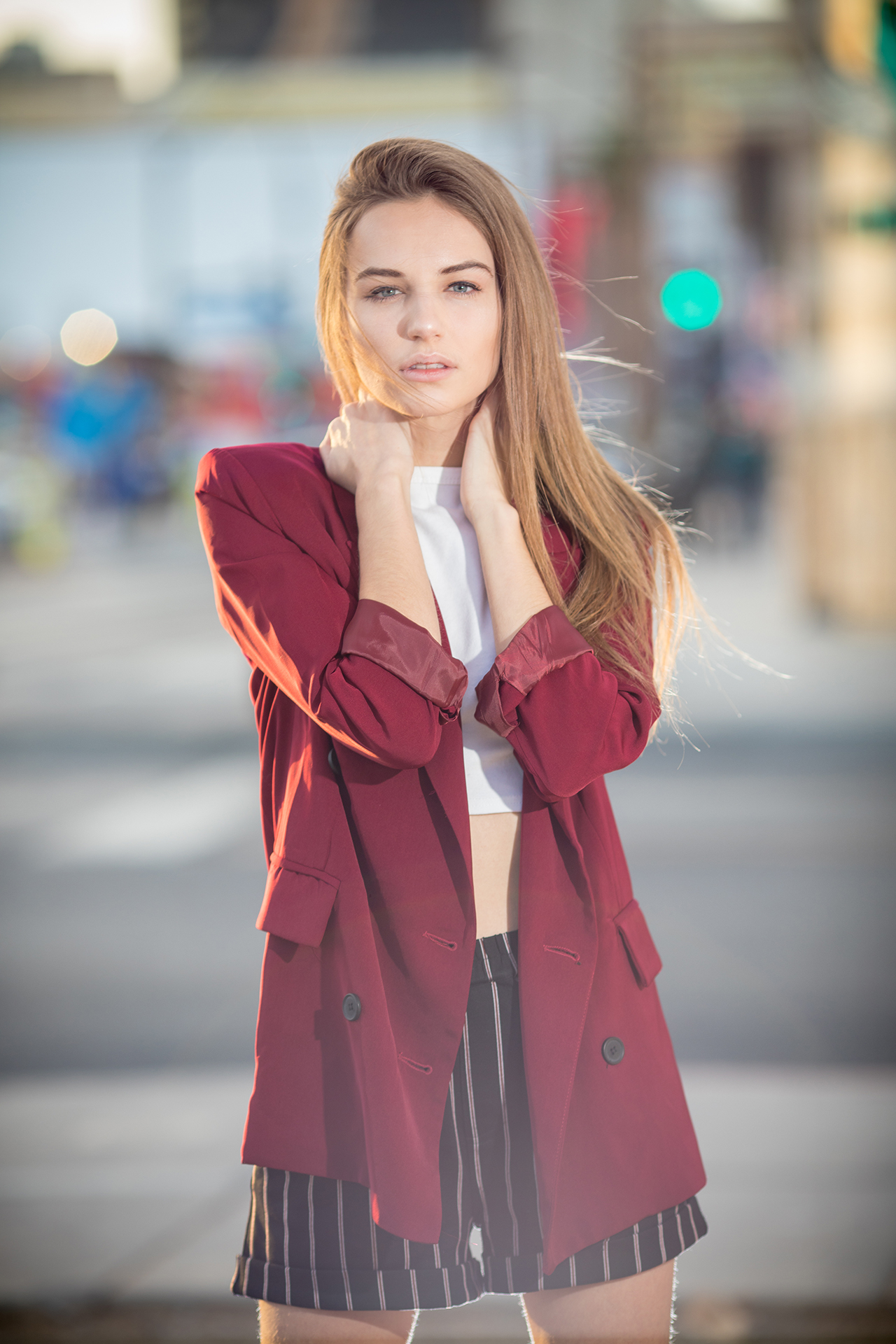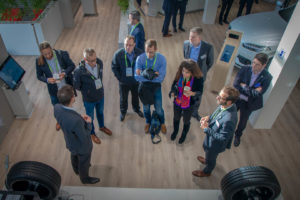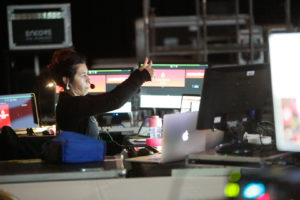Photographing Big Corporate Events and Personalities
Photography, just like any other profession, is a ladder. You can’t reach the top without taking the many bottom steps preceding the few top steps. Starting as a rookie, but a very ambitious and aspiring one, I’ve always dreamt of working at the top. If you’re honest with yourself, you’ll always see your growth and progression taking you where you deserve to be. I think the current life of a photographer prepares you for your next step on the ladder and as you gain more experience knowledge skills and expertise, so you gain more steps in your wake.
In corporate event photography, photographing large, multi-day events was something I intended to achieve at some point in time. Am not talking about some “one-off gig” here and there, but constant shots working as part of a team comprising CEOs and business executives of large corporations. I mean, once you work with the “big boys”, you’ll always want to remain working with the big boys. It’s a high-pressure environment and a creative corporate event photographer with years of experience is the only way to go, because special events need a special photographer.

The stakes are higher at the top
Large-scale production is synonymous with large-scale expectations. As rewarding as it may seem, it comes with its own added pressure. Most of my engagement with large corporate organizations centers on creative visual content to serve one or more of the following purposes: advertising, promotion, and documentation. And generally to shoot images that present the company’s services and products in the best possible light.
The subject of this photography session with a large team can vary greatly from industrial premises and equipment, through products and production processes, to corporate events and companies’ staff and personnel.
Hence, working with a corporate CEO requires more than just being a corporate event expert. I’d have to incorporate different areas of photography including landscape, portraiture, photojournalism, and editorial photography working with a single company or team.
Experience and Equipment are the key
Working in a team with Executives and marketing directors requires a lot from the photographer. Everything is large-scale – lights, budget, sound, sets, big company personnel, and industry leaders. At that level, there are no cutting corners, I rely on my experience over the years and high-end equipment to get me through the objective: which is to create strong, clean, visually engaging creative content to help my client market, promote, share, sell and explain its brand vision and story. Event Photography: Busy, busy, busy and an experienced event photographer is the best bet for your investment.
Looking to capture the essence and grandeur of big corporate events and personalities? Look no further! In this article, we will delve into the art of photographing these high-profile occasions, whether it’s a star-studded cocktail party or a prestigious industry conference. With the right techniques and equipment, you can ensure that your photos beautifully capture the energy, emotion, and atmosphere of these events, while also highlighting the key individuals involved.
From perfectly timed candid shots to striking portraits, our guide will provide you with the tips and tricks to excel in event photography. We will explore the importance of planning, lighting, composition, and post-processing techniques to help elevate the quality of your photos.
Whether you’re a professional photographer looking to expand your repertoire or an amateur enthusiast eager to capture unforgettable moments, this article has got you covered. So grab your camera, buckle up, and get ready to navigate the world of big corporate events and personalities through the lens.
Importance of Professional Event Photography
Event photography plays a crucial role in capturing and preserving the memories of big corporate events and personalities. It goes beyond simply documenting the occasion; it helps create a visual narrative that tells the story of the event. Professional event photographers have the skills and expertise to capture key moments, emotions, and interactions, ensuring that the photographs reflect the true essence of the event.
When it comes to big corporate events, the photographs serve multiple purposes. They can be used for post-event marketing and promotion, showcasing the success of the event to potential sponsors or attendees. High-quality photographs can also be invaluable for press releases, social media, and website content, helping to establish a professional and polished image for the company or organization.
In addition, the presence of a professional photographer at these events adds a touch of prestige and importance. It signals that the event is worth capturing and that the individuals involved are significant. The photographs serve as a visual record of the event’s success, ensuring that the memories will be cherished for years to come.
Types of Big Corporate Events and Personalities
Big corporate events encompass a wide range of occasions, each with its unique characteristics and requirements. Some common examples include industry conferences, product launches, award ceremonies, charity galas, and corporate retreats. Each event presents its own set of challenges and opportunities for photographers.
Industry conferences are often characterized by keynote speakers, panel discussions, and networking sessions. Photographers need to be agile and quick to capture the essence of these events, focusing on both the speakers and the audience’s reactions. Product launches, on the other hand, require a keen eye for detail and the ability to capture the excitement and anticipation surrounding the new product. Award ceremonies demand a sense of timing and the ability to capture the emotions of the winners and attendees.
When it comes to photographing personalities, the approach may vary depending on the individual and their role in the event. CEOs and executives may require more formal and posed shots, showcasing their authority and professionalism. Celebrities and keynote speakers, on the other hand, may require a more candid and relaxed approach, capturing their personality and charm.
Understanding the specific requirements of each event and personality is crucial for delivering exceptional photographs that meet the client’s expectations.
Understanding the Client’s Goals and Expectations
Before embarking on any event photography assignment, it is essential to have a thorough understanding of the client’s goals and expectations. This involves having clear communication with the client to determine their vision for the event and the desired outcome of the photographs.
Some clients may prioritize capturing candid moments and interactions, while others may want more posed and formal shots. It’s important to discuss the client’s preferences and expectations regarding the style, tone, and mood of the photographs. This will help you align your approach and ensure that you deliver photographs that exceed their expectations.
Additionally, understanding the client’s target audience and the intended use of the photographs is crucial. Are the photographs intended for internal use, external marketing materials, or press releases? Knowing the intended purpose will help guide your composition, focus, and post-processing decisions.
By establishing a clear understanding of the client’s goals and expectations, you can tailor your approach and deliver photographs that align with their vision.
Preparing for the Event – Equipment and Logistics
The key to successful event photography lies in thorough preparation. This includes ensuring that you have the right equipment and logistics in place to capture the event seamlessly.
Start by investing in high-quality equipment that suits the needs of event photography. A versatile DSLR or mirrorless camera with a range of lenses will allow you to capture a variety of shots. Wide-angle lenses are useful for capturing the overall atmosphere and venue, while telephoto lenses enable you to capture candid shots from a distance. Don’t forget to bring spare batteries, memory cards, and any additional lighting equipment you may need.
Before the event, familiarize yourself with the venue and its layout. This will help you plan your shots and make the most of the available lighting conditions. If possible, attend a walk-through or rehearsal to get a sense of the event flow and identify any potential challenges or opportunities.
Communication and coordination with event organizers are also crucial. Ensure that you have a clear understanding of the event schedule, including key moments and important individuals. This will allow you to position yourself strategically and capture the most impactful shots. Don’t hesitate to ask for any necessary access or permissions in advance to avoid any last-minute surprises.
By being well-prepared and organized, you can focus on capturing the essence of the event without worrying about logistical hurdles.
Capturing the Essence of the Event
Once the event is underway, it’s time to put your skills and techniques into action. Capturing the essence of a big corporate event requires a combination of technical expertise and artistic vision.
Start by paying attention to the details. Look for unique angles, interesting compositions, and moments of interaction or emotion. Keep an eye out for candid shots that truly capture the energy and atmosphere of the event. These candid moments often tell a more authentic and compelling story than posed shots.
When photographing the event, be mindful of the lighting conditions. Big corporate events can take place in a variety of settings, from dimly lit ballrooms to brightly lit conference halls. Adjust your camera settings accordingly and make use of additional lighting equipment if necessary. Mastering the art of balancing ambient and artificial lighting will help you create visually stunning photographs.
Don’t be afraid to experiment with different perspectives and focal lengths. Move around the venue, change your vantage points, and try different lenses to add variety to your shots. This will ensure that you capture a wide range of perspectives and moments, showcasing the event in its entirety.
Remember, it’s not just about capturing the event itself but also the people involved. Pay attention to the interactions between attendees, the expressions of the personalities, and the emotions of the participants. These moments of connection and engagement add depth and storytelling to your photographs.
Techniques for Photographing Personalities
Photographing personalities at big corporate events requires a different approach than capturing the overall ambiance. Here are some techniques to help you capture striking portraits and authentic moments with key individuals:
Establish rapport: Take the time to connect with the personalities before you start photographing them. Introduce yourself, have a brief conversation, and make them feel comfortable in front of the camera. Building a rapport will help them relax and show their genuine personality, resulting in more authentic and impactful photographs.
Be discreet: When photographing personalities, it’s important to respect their privacy and personal space. Be discreet in your approach, capturing natural moments without being intrusive. This will help you capture their true essence without making them feel self-conscious.
Use natural light: Whenever possible, utilize natural light to capture portraits. Natural light provides a soft and flattering illumination that enhances the subject’s features. Position your subject near windows or in well-lit areas to make the most of the available natural light.
Direct the subject: While candid shots are valuable, there will be times when you need to direct the subject for more posed photographs. Provide simple instructions and guidance to help them strike a pose or express a specific emotion. Be clear and concise in your directions, ensuring that the subject feels comfortable and understands what you are asking of them.
Capture emotions: The key to capturing impactful portraits is to focus on the subject’s emotions. Look for moments of joy, concentration, thoughtfulness, or surprise. These emotions bring depth and authenticity to the photographs, allowing the viewer to connect with the subject on a deeper level.
Post-processing and Delivering the Final Product
Once the event is over and you have captured a multitude of photographs, it’s time to dive into the post-processing stage. Post-processing allows you to enhance the quality and impact of your images, ensuring that they meet the highest standards.
Start by selecting the best images from your collection. Look for photographs that tell a compelling story, evoke emotions, or showcase key moments. Discard any duplicates, out-of-focus shots, or images that don’t meet your desired quality standards.
Next, fine-tune the selected images using photo editing software. Adjust the exposure, contrast, and white balance to enhance the overall look and feel of the photographs. Pay attention to details such as sharpness, noise reduction, and color correction. Remember to keep the editing natural and avoid over-processing, as it can detract from the authenticity of the photographs.
Once you are satisfied with the edited images, it’s time to deliver the final product to the client. Depending on the client’s preferences and requirements, you can provide photographs in various formats, such as high-resolution digital files, prints, or an online gallery. Ensure that the delivery is timely and professional, reflecting the high-quality standards of your work.
Case Studies of Successful Event Photography
To further illustrate the art of photographing big corporate events and personalities, let’s explore some case studies of successful event photography:
The Tech Industry Conference: In this case, the photographer successfully captured the energy and excitement of the conference by focusing on the engaging interactions between attendees and speakers. The photographs highlighted the cutting-edge technology on display and the passion of the participants, effectively showcasing the success of the event.
The Celebrity Gala: The photographer expertly captured the glamour and elegance of the celebrity gala by focusing on striking portraits of the attendees. The photographs highlighted the stunning outfits, the personalities’ charisma, and the overall luxurious atmosphere of the event.
The Corporate Retreat: The photographer skillfully captured the team-building activities and moments of collaboration during the corporate retreat. The photographs showcased the participants’ enthusiasm and engagement, conveying a sense of camaraderie and unity.
These case studies demonstrate the power of event photography in capturing the essence of big corporate events and personalities. By studying successful examples, you can gain inspiration and insights to elevate your event photography skills.
Tips for Marketing Your Event Photography Services
Now that you have mastered the art of photographing big corporate events and personalities, it’s time to market your services and attract clients. Here are some tips to help you effectively promote your event photography business:
Build a portfolio: Create a portfolio showcasing your best event photography work. Include a diverse range of photographs that highlight your skills, style, and ability to capture key moments. Display the portfolio on your website and social media platforms to attract potential clients.
Network and collaborate: Attend industry events, conferences, and networking sessions to connect with event organizers, marketing professionals, and potential clients. Collaborate with other professionals in the industry, such as event planners or marketing agencies, to expand your reach and gain valuable referrals.
Utilize social media: Leverage the power of social media platforms to showcase your work and engage with your target audience. Regularly post high-quality photographs from events you have covered, share behind-the-scenes stories, and interact with followers. Engaging content and a strong online presence will help establish your credibility and attract potential clients.
Offer packages and incentives: Create attractive packages and incentives to entice potential clients. Offer additional services such as photo albums, on-site printing, or social media coverage to add value to your photography packages. Providing a comprehensive and customized service will set you apart from competitors.
Seek testimonials and reviews: Request testimonials and reviews from satisfied clients to build trust and credibility. Positive feedback from previous clients can be a powerful marketing tool and help attract new clients. Display these testimonials on your website and social media platforms to showcase your expertise and professionalism.
By implementing these marketing strategies, you can effectively promote your event photography services and attract clients who value high-quality and impactful photographs.
Photographing big corporate events and personalities requires a combination of technical expertise, artistic vision, and meticulous planning. By understanding the importance of professional event photography, familiarizing yourself with different types of events and personalities, and aligning with the client’s goals and expectations, you can capture the essence of these occasions in a way that leaves a lasting impression.
Remember to prepare thoroughly, utilize your equipment effectively, and apply post-processing techniques to elevate the quality of your photographs. By continuously honing your skills and staying updated with the latest trends and techniques in event photography, you can excel in this competitive industry.
So, embrace the challenge, bring your unique perspective, and let your photographs tell the compelling stories of big corporate events and personalities. Your work has the power to capture the moments that shape industries, inspire change, and create memories that will be cherished for generations to come.
Call or text 702-530-4384 or email us at info@christianpurdie.com to book your Las Vegas photography session.



















